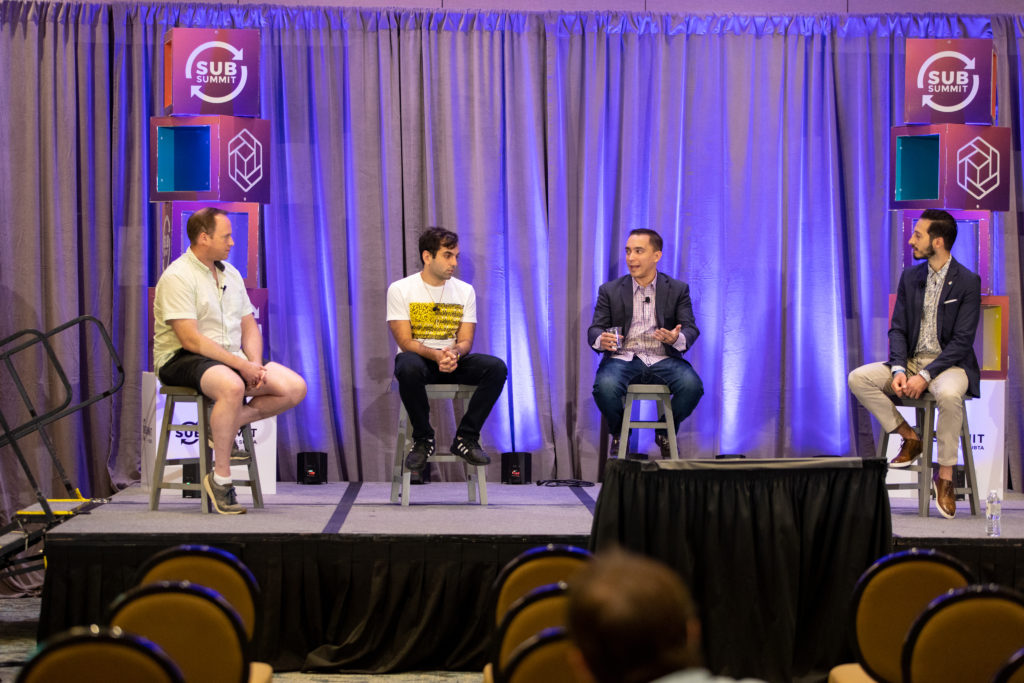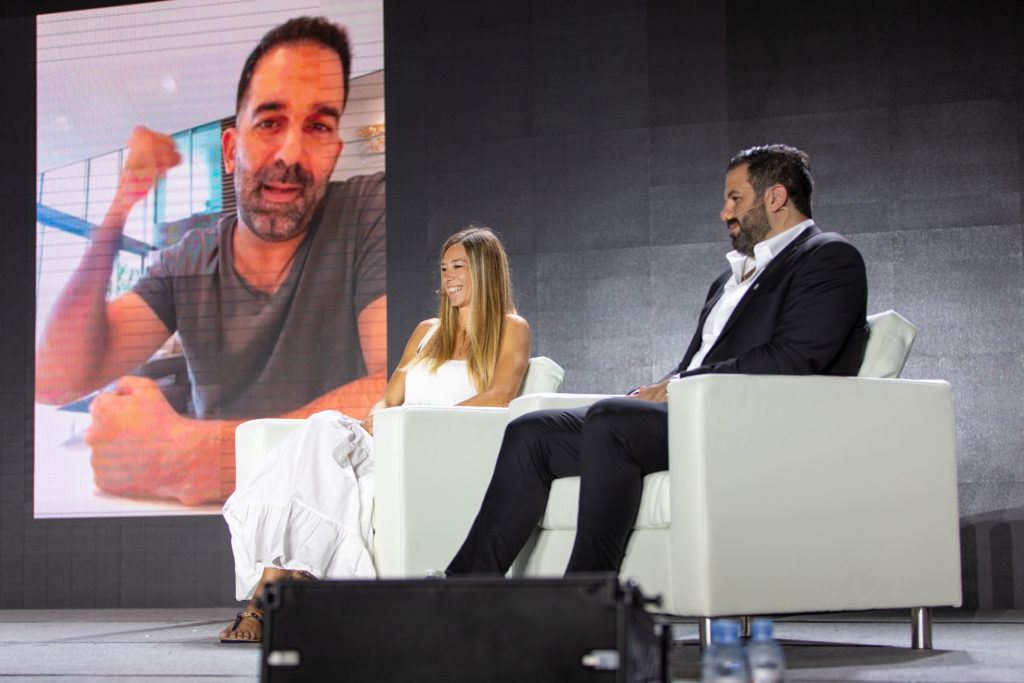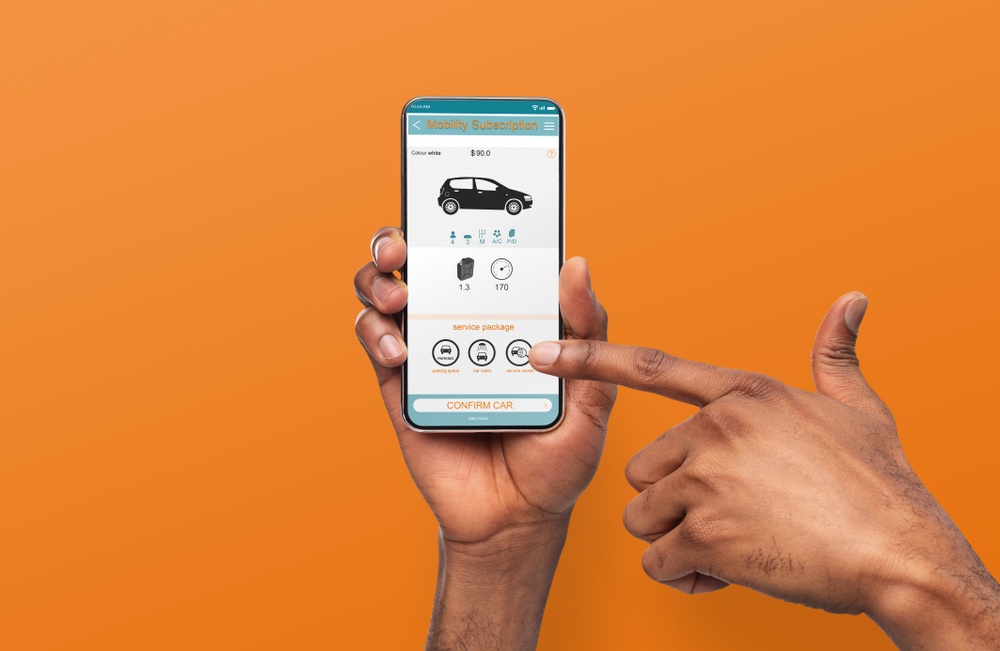
The past year has been nothing short of surprising, frustrating, exciting, and bewildering as the growth rate of subscription businesses continues to increase rapidly.
Here at SUBTA, our goal is always to equip subscription business owners with as much information as possible so they can turn industry trends into insightful, revenue-driving decisions.
To bring you more of those insights, we sat down with Paul Chambers, CEO & Co-Founder of SUBTA, and Chris George, Co-Founder & Chairman of SUBTA, to learn what these two industry leaders see as the biggest takeaways of this year.
Nadine Ghiran (NG): Let’s dive right in. With the privacy and tracking changes that went into effect over the summer, what is the biggest lesson we can pass on to business owners who might be struggling to get their brand in front of customers?
Chris George (CG): In order to build a brand, it’s important to have diversified, top-of-the-funnel traffic – especially now because of everything that’s happened with iOS and the pixel not allowing you to track individual users.
Companies that were solely dependent on Facebook for their customer acquisition ran into a big rut because it wasn’t tracking anymore like it used to. So if you weren’t diverse with your traffic (like a lot of brands weren’t prior to the changes), then that tech shift likely caused you big problems.
Those brands were so dependent on one marketing source that when that went away, they were in a bind. What we’ve learned from this is that it’s always good to be super diverse and to vary the traffic pathways that are bringing potential customers to your website.

NG: Another issue that has hit businesses hard this year has been finding reliable supply chains. What would you recommend to subscription companies as this problem persists?
CG: One thing we’ve learned from these supply chain disruptions is the importance of being well prepared when thinking about building out your boxes, buying future products, and product sourcing.
A good practice is to always be well prepared, even in a situation in which the supply chain seems good now. Things do hit the fan, and if you’re well prepared, then those crises won’t affect you as much.
If you’re not prepared, then those crises can be a big problem for your customers and reflect badly on your business.
There are a few ways to do that. Have multiple companies and suppliers that you can go to in case one supplier is well behind. Also, think about an alternative product in the case that something goes wrong. For example, if you’re going to have a scarf that’s supposed to go out in December, have a backup plan. Work with a supplier who can send you beanies, for example, if the scarves don’t arrive by a certain time.
The idea is to have different items in mind that aren’t necessarily on standby, but that you know you have in case something happens.
Here’s another good example: If I’m putting socks in my box, I typically source them myself. But I also know that I can reach out to Happy Socks, which is a socks manufacturer, and they’ve got tons of socks in stock.
If my products are not going to make it in time, having a supplier on hand that has in-stock items may cost more, but it’s better than not having an item at all.
NG: Let’s talk mergers and acquisitions because there have been some big ones this year. We’ve seen pairings such as Cigar Club and Gentleman’s Box, BoxyCharm and Ipsy, and Carnivore Club and BattlBox. What have we learned about the merger or acquisition process for subscription brands?

Paul Chambers (PC): It’s about the economies of scale.
When you’re acquiring another brand, there are pros and cons. One of the pros is economies of scale. For example, instead of having two media buyers, you can consolidate and have one media buyer for both companies. Similarly, your customer service team could probably manage both companies and the person that runs social could be working on both companies.
Also, when you merge, you get access into that new company’s analytics using their AdWords. You don’t have to compete with them anymore and you actually get to work as one.
At SubSummit, when talking about his recent acquisition process, John Roman, with BattlBox, said that merging frees him up mentally to do other things, and to not be focused on the day-to-day operations anymore.
The key is to find efficiencies in the economies of scale.
CG: I agree with Paul and also want to add that, on a surface level, you’re going to see more and more of these mergers happen because sometimes a brand hits a plateau.
Take Ipsy, for example. The people at Ipsy know that they have, say, 500,000 subscribers — and they can’t get to a million. It doesn’t matter what marketing channels they’re using; at that plateau point, the only way that they can get to 1 million subscribers is to acquire another brand.
NG: Why do you think these plateaus occur in subscription businesses and what metrics can subscription businesses look at to see if a merger or acquisition is a good strategy for them?
CG: I think for a few reasons. Every brand has a customer acquisition cost (CAC). They know that it’s going to cost X amount of money to acquire a customer.
It’s going to get to a point where, for example, they’re acquiring 5,000 new customers a month and their CAC is $50 per customer. In order for them to acquire 10,000 customers a month, the costs are going to have to go up to, let’s say, $100 per customer.
When the CAC gets too high, it doesn’t make financial sense for the business to spend that much to acquire a customer because that cost is too close to — or more — than the lifetime value (LTV).
Audiences get stale, too, so you have to shift and find new audiences to approach. Because of that, your CAC will get higher with time.

NG: We had the pleasure of hearing from BoxyCharm and Ipsy at this year’s SubSummit event in Dallas. In particular, Yosef Martin of BoxyCharm talked about the importance of community in keeping “Charmers,” their name for subscribers. A lot of subscription brands are starting to offer events and get-togethers as part of their community building. Do you think these need to be in person or does virtual suffice?
PC: People still need connection; they still enjoy meeting other people. I don’t think in-person events are going away.
Events have been forced to evolve during Covid and that has created other opportunities to connect people and allow them to experience things that they might have missed. For example, if the event doesn’t work in your schedule, your kids got sick, or you had to cancel at the last minute — now you can still attend virtually.
At this year’s SubSummit, for example, Yosef from BoxyCharm had a really important high-level meeting come up and couldn’t make it out, but we still worked him in virtually. A hybrid event model allows for that flexibility when it’s absolutely needed.
I think that’s what you’re going to find going forward. Brands can continue to create those connections, both in person and virtually, and bridge gaps.
CG: People pre-Covid were already arguing that this digital age has disconnected people in general. There’s so much virtual stuff happening — from online dating to the way we communicate — and so much less face-to-face and more via text.
NG: What do you recommend to subscription brands trying to build communities?
PC: Covid made it so that you couldn’t even see people for a period of time. I think that what’s been proven is that people want that human, physical connection in person.
Anybody who’s trying to build events or build a community has to be hybrid; companies have to be able to appeal both to those who want to meet in person and those who may not be comfortable or don’t want to be in person. Don’t look at it as a negative; you just look at it as a pivot.

CG: Clearly the brands that are building community are the ones that are seeing the most success, in general.
I always reference Peloton. There’s a strong community there; that’s why it does so well. FabFitFun, too, has a strong community.
Brands that have a community inherently have more customer loyalty, higher lifetime values from the customer, and an overall better business model. They’re also going to have better unit economics, better revenue, and better profit.
PC: Vinyl Me, Please is one of my favorite brands to reference when talking about community because it offers so much to its members in terms of new record drops, limited availability, and connection. Customers are like, “Oh my gosh, I got this new artist record that has limited availability” and the community stems from there.
Brands that are focusing on community are those that are standing the test of time and have significantly greater customer lifetime value.
My wife finally convinced me to get a Peloton (I’m the last one of my family), and I’ll likely be a paid member of that service for as long as I have the machine. I have the hardware, so why would I have the hardware but not the paid software behind it?
It’s just like Apple. I have all this iCloud storage. I’ll never cancel that $9.99 a month that I’m paying for the two terabytes of storage because I don’t want to lose all those pictures; I don’t want to lose everything behind that.
It’s all because I’m seeing the value of it. I’m like, “Oh, that $10 is such a no-brainer. For all my pictures, everything that’s archived out there, it’s such a good value, and so worth it to me,” and so I stay subscribed.

NG: So what separates the Pelotons from the NordicTracks of the world?
PC: I think the dominating factor in there is the emotional connection. People wouldn’t buy a Peloton if they didn’t love the service that was offered behind it.
My sister told me the other day, “When I was riding, everyone was giving me high fives and shout outs because it was my 500th ride!” The software recognized that and encouraged her — and she was so excited about it. It deepened her emotional connection.
Those little things that make you feel part of a community and engage you go such a long way. Without that emotional connection, nobody would buy the hardware.
NordicTrack has virtually the same offer as Peloton, but you don’t hear about it as much — and why do you think that is? It’s because they’re missing that X factor.
Disney, Apple, Peloton — they’re the most beloved brands in the world because they do things that show that they care about their customer — and people rave about them; they love them.
CG: NordicTrack initially just offered products that were sold in stores, whether those were a treadmill or a bike. The company’s focus was just to get its name out there; it was focused on retail and it wasn’t focused on building a community within the consumer.
Peloton’s pure focus from the beginning was very direct-to-consumer oriented with a community-first approach — almost like a cult following. You really can’t have any of their products without having a subscription, and now it’s inherently engaging with you every single month.
I can buy a NordicTrack treadmill, but I can put that treadmill inside my house, use it twice, and never use it again. I have no engagement with NordicTrack. The marketing team there doesn’t know my email address, my date of birth, my workout habits, etc.
They’re not going to know anything about me. I walked into a store and bought it — and that was the end of my relationship with NordicTrack.
Peloton, on the other hand, is identifying its consumers, building a relationship with them, getting a profile on each, and collecting ongoing information to communicate with its audience in a meaningful way — and on a regular basis.
Then, the Peloton team will do these little things that Paul mentioned, like recognizing that someone’s on their 500th ride. Why does Peloton know that it’s someone’s birthday? Because their system got that information when the person signed up. That’s what separates the Pelotons from the NordicTracks in this industry.

NG: Personalization and customization seem to be features that have played a big factor in the growth rate of subscription businesses this year. Why do you think that is and what advice can you offer subscriptionpreneurs looking to incorporate more personalization and customization?
PC: Personalization is definitely going to continue to be important. You saw that in Jeremy King’s talk at SubSummit 2021 — personalization is going to be a big factor going forward.
Knowing and catering to your customers’ individual needs and who they are is huge. Sizing, color preference, and things like that are a great starting point, but it’s becoming important to take that a step further.
Chewy, for example, recognized that I recently adjusted the frequency of our dog food order and they reached out to me to let me know that they noticed and offer solutions for me to keep my subscription but adjust it to what my family’s and my dog’s need.
Even learning more about the consumers’ habits and what they like and don’t like is powerful for retention. Personalization as a whole, you just have to have it.
CG: Building on that, on the customization side, subscriptions are more competitive than ever. So having the ability to get some customization is essential to get that leg up against competition.
The data shows that consumers are more likely to like the delivery of a product when you design a “discover and delight” subscription where the consumers don’t know exactly what they’re going to get.
As you layer in more customization, you have a higher likelihood of giving customers something that they want, which means that they’re less likely to cancel.
With all the competitiveness out there, you need to separate yourself in that sense. If I don’t like my BoxyCharm, for example, because I didn’t like the items they put in, then I’m going to try another makeup or beauty box.

But if BoxyCharm found out some information about me and knows that I’m into certain types of beauty products, items that match my skin tone, etc., more than likely, they’re going to send me something that I’ll like and I’ll, therefore, want to keep my subscription.
Make sure that your tech stack is capable of customization. There are many, many softwares that allow for personalization, so it’s accessible to any subscription now.
Our “Picking the Perfect Platform” series can help you figure out which is the right fit for your business.
NG: As we look toward 2022, are more companies going to start offering subscriptions?
PC: Some of the biggest companies in the world are continuing to bet the future of their business on subscription. The Subscription Economy Index driven by Zuora is continuing to outpace S&P and there’s huge growth in that all around.
As David Beasley pointed out to me recently, this increasing growth rate of subscription businesses may call for a Chief Subscription Officer to be added to companies in the future.
Organizationally, are these companies focusing on the right thing? Rivian recently went public, and its executives said that a large portion of Rivian’s business is going to be driven by digital services revenue, which is all subscription for them.

There’s the $10,000 subscription to their automated driving, and then they also anticipate another $5,500 from each customer in future subscription revenue.
Additionally, GM announced that it’s going to generate $2 billion in subscription revenue in the near future.
For these companies that have historically relied so much on a fixed transaction and a product that becomes obsolete or depreciates as soon as you drive it off the lot, those new subscription-based products will continue to have value long term.
Moving forward, we can expect absolutely every company to have some sort of subscription component to it.
CG: He’s right. We believe this and the data is proving that if you don’t start to build some sort of subscription component within your business, you’re going to be behind.
It’s almost like when the brands that started at retail back in the 2000s didn’t start building an e-commerce presence, they got left behind. Those that got comfortable with their current business model didn’t make it.
Why didn’t Blockbuster do what Netflix did? It didn’t pivot. It didn’t build a subscription model. It didn’t move into a digital model; it just stayed in its physical presence. And now look at where Blockbuster is and where Netflix is.
NG: Like many things in our hyper-digital lives, the subscription industry is changing rapidly. This year taught us a lot about reaching new audiences, the importance of connection and community, and how to think for longevity. The increasing growth rate of subscription businesses in 2021 is very telling of the future of the industry. Thank you both so much for your insights and all the guidance you’ve provided our SUBTA community this year and always.


